
WINTER 2023 Plus... A Recognized World Center for Advancing Health Care through Science, Education & Technology NF2 BioSolutions Accelerating Gene Therapy Research and Finding a Cure for Neurofibromatosis Type 2 (NF2) Venue Rule Change Will Increase Cost of Healthcare and Threaten Patient Access in Pennsylvania PHILADELPHIA IS READY TO OVERCOME GUN VIOLENCE, OUR GREAT AMERICAN EPIDEMIC

Philadelphia County Medical Society
2100 Spring Garden Street, Philadelphia, PA 19130 (215) 563-5343
www.philamedsoc.org
EXECUTIVE COMMITTEE
Ricardo Morgenstern, MD
PRESIDENT
John M.Vasudevan, MD
PRESIDENT ELECT Stephen R. Permut, MD, JD
IMMEDIATE PAST PRESIDENT
Oneida Arosarena, MD, FACS
SECRETARY Dale Mandel, MD
TREASURER
BOARD OF DIRECTORS
Dom Bucci, MD
Sharon Griswold, MD
Cadence A. Kim, MD
William King, MD
Harvey B. Lefton, MD
Max E. Mercado, MD, FACS
Natalia Ortiz-Torrent, MD, DFAPA
Anthony M. Padula, MD, FACS
Dhruvan Patel, MD
David A. Sass, MD, FACP
Katherine Sherif, MD
Walter Tsou, MD
Graeme Williams, MD
Winnie Rao (Drexel)
FIRST DISTRICT TRUSTEE
Lynn Lucas Fehm, MD, JD
EXECUTIVE DIRECTOR
The opinions expressed in this publication are for general information only and are not intended to provide specific legal, medical or other advice or recommendations for any individuals. The placement of editorial opinions and paid advertising does not imply endorsement by the Philadelphia County Medical Society.
All rights reserved. No portion of this publication may be reproduced electronically or in print without the expressed written consent of the publisher or editor.
Philadelphia is Ready to Overcome Gun Violence, Our Great American Epidemic
PCMS Interview: Benjamin Smood, MD Resident-Integrated Cardiothoracic Surgery, University of Pennsylvania, Department of Surgery
NF2 BioSolutions Accelerating Gene Therapy Research and Finding a Cure for Neurofibromatosis Type 2 (NF2)

Venue Rule Change Will Increase Cost of Healthcare and Threaten Patient Access in Pennsylvania

Politics & Medicine: So, You Won the Election
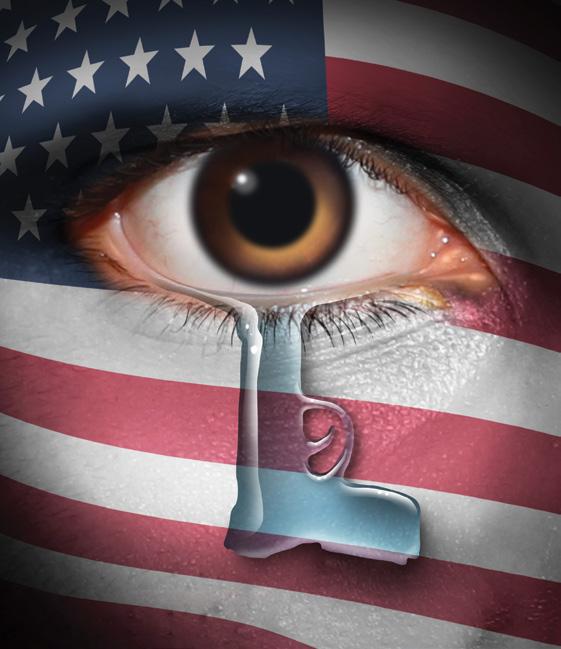
mRNA Vaccines Have Saved Millions of Lives –What’s Next
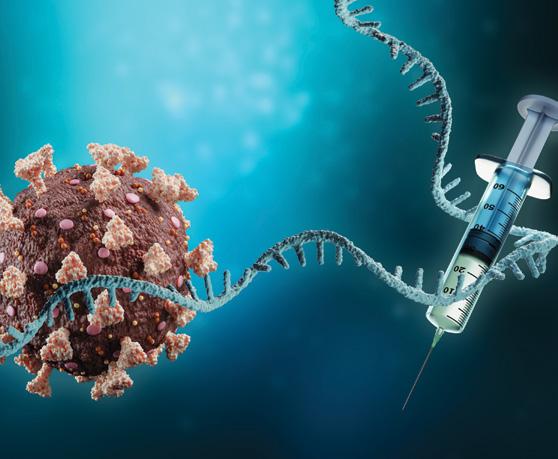
Philadelphia Medicine is published by Hoffmann Publishing Group, Inc., Reading, PA HoffmannPublishing.com | (610) 685.0914
FOR ADVERTISING INFO CONTACT: Tracy Hoffmann • Tracy@Hoffpubs.com • 610-685-0914 x201
 Mark C. Austerberry
Editor
Mark C. Austerberry
Editor
Contents Winter 2023
Tracy Hoffmann
4
7
8
12
14
16
18
21
First Ever Hybrid House of Delegates in 2022 Wraps up
Adult Pennsylvanians Working with Leaded Materials May Be Occupationally Exposed to Lead
PHILADELPHIA IS READY TO OVERCOME GUN VIOLENCE, OUR GREAT AMERICAN EPIDEMIC
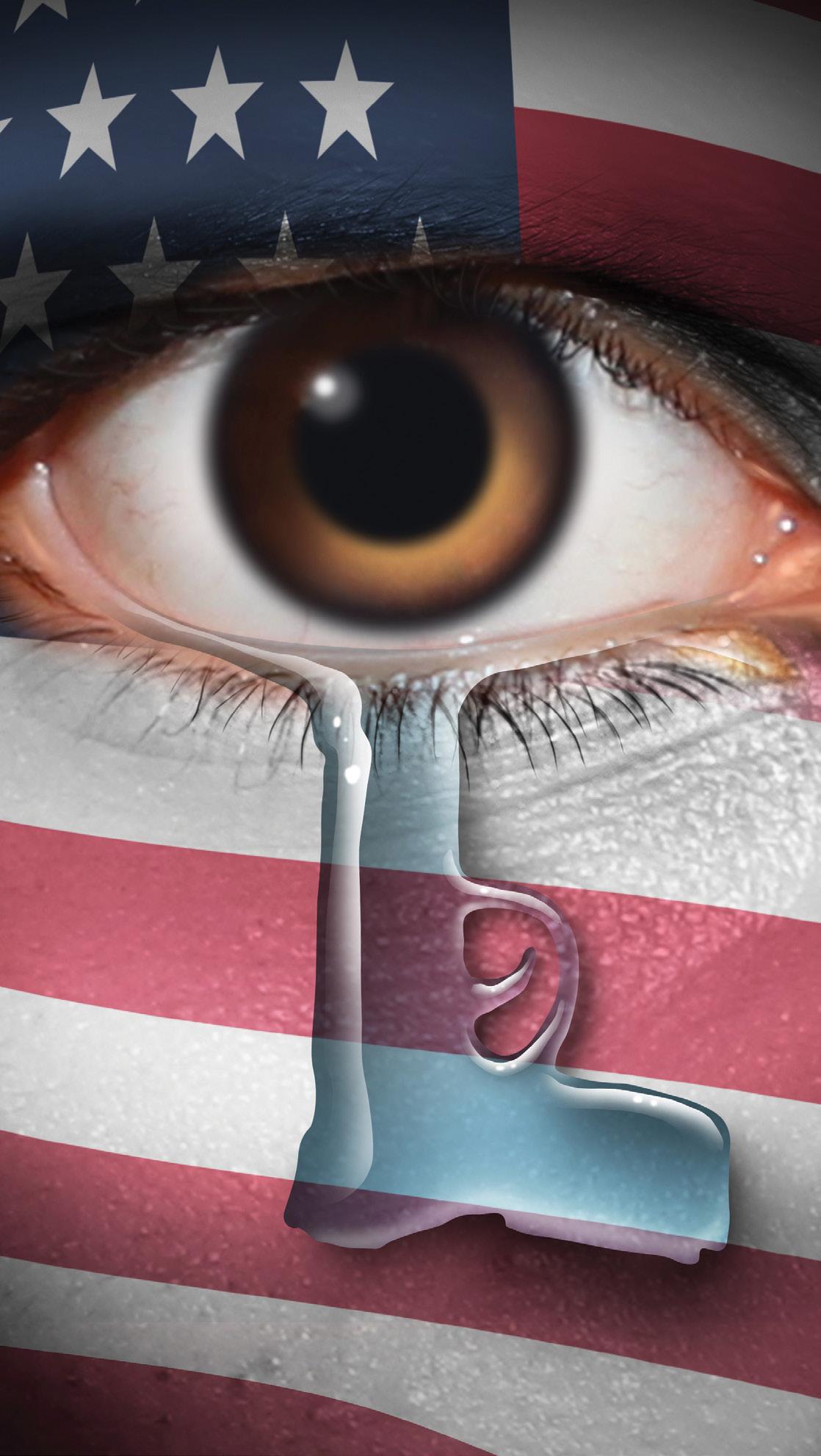
 by William F. King, Jr., MD, FAAP Vice President, Medical Society of Eastern PA Board Member At Large, Philadelphia County Medical Society
by William F. King, Jr., MD, FAAP Vice President, Medical Society of Eastern PA Board Member At Large, Philadelphia County Medical Society
Iwatched Dr. Preston Phillips work almost 30 years ago, when I was a medical student, and he was senior surgical resident at Yale Medical School. Working with Dr. Phillips was like playing with Lebron James; he was bigger, more talented, and better than the rest of the team. The other Black doctors in training at Yale admired and hoped to become as dedicated to our patients as he. Four of us, who tried to follow his example, were devastated to hear that he was the doctor who was gunned down in Tulsa in June in a mass shooting by an angry patient
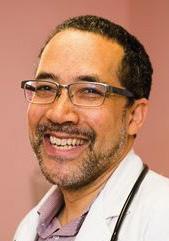
who purchased an assault rifle the day of his massacre. Four Black male doctors felt this loss of our brother in medicine like a death in the family. We only passed a few words of sorrow between us, remembering Preston, and mourning our violent nation. Then we each went back to work. We have patients to see, work to do, even more to do with the loss of a great man like Preston. But Dr. Phillips’ death has shaken me.
We doctors know how to focus on danger. For three years, the Covid19 pandemic has been the focus of our medical effort and
energy. Yet as we fought the pandemic, the American epidemic of gun violence has been steadily tearing through our communities and flaring up into burst after burst of mass murder. A racist 18-year-old white boy drives across New York with a just purchased assault rifle, searching on the internet for the best place to kill Black people, and devastates a community in Buffalo, New York. A troubled Latino 18-year-old boy legally buys assault weapons and commits a horrific massacre at an elementary school in Uvalde, Texas, devastating a Latino community that fought
4 Philadelphia Medicine Winter 2023 FEATURE philamedsoc.org
for educational rights at Robb Elementary a generation before. An angry black man buys an assault weapon, and the same day kills his doctor, our friend Dr. Preston, and three others in the office, apparently because he was not happy with his surgery. And in June a group of young black men in Philadelphia got into a fight outside of a bar in South Philly, pulled out guns instead of fists, and, while trying to kill each other, killed three people and injured 11. One of my teenage patients was enjoying an outing on South Street and had to endure the trauma of seeing one of her friends die during that South Street Philadelphia shooting. During the same weekend 3 were killed, and 11 injured in Charlotte, North Carolina. Same type of chaos, same mayhem. Chaos! Chaos? Evil people? Crazy gunmen? No. These were Americans. American gunmen being Americans. What have we become… perhaps Americans.
We Americans have a gun violence problem.1 America has a lot of guns… more than one for each American; that’s a lot. America also has a lot of criminals who use guns, who can get guns, who can purchase a gun in a few minutes2. America also has the most citizens who have never committed a crime who have caused a firearm death as their first impulse when in conflict or stress.3 America is in fact the most dangerous place on earth to be intentionally killed by another citizen who is not a combatant in a war zone. We are not aware of this fact because our disproportionate loss of citizens from gun violence has been a common cause of preventable death in the United States for almost a generation.
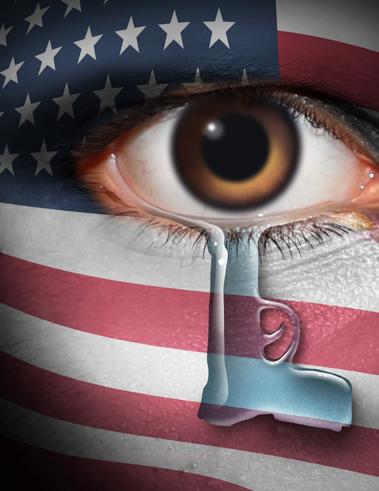
I don’t want to return to the work of reducing gun violence in Philadelphia. I’m not tired of the work, I’m a Black male pediatrician, I love trying to keep our children happy and healthy, and keeping our youth alive is the first task of my job. I’m not frustrated by the rising number of gun homicides and injuries in 2022 Philadelphia. In the 1970s, 1980s and 2000s surges in gun violence were controlled and reversed through a combination of community policing, aggressive enforcement of gun laws, expanded programming for youth,
Read online at pm.hoffmannpublishing.com CHESTER COUNTY FALL 2022 Published by Pennsylvania’s First Medical Society The Art of Chester County Presents The Center for Performing and Fine Arts Updated situation report: mpx part 2 Finding a Cure for Neurofibromatosis

WINTER 2023 Plus...


A RecognizedWorld Center for Advancing Health Care through Science, Education & Technology NF2BioSolutionsAcceleratingGene forTherapyResearchandFindingaCure NeurofibromatosisType2(NF2) VenueRuleChangeWillIncreaseCostof HealthcareandThreatenPatient AccessinPennsylvania
PHILADELPHIA IS READY TO OVERCOMEGUNVIOLENCE, OUR AMERICANGREAT EPIDEMIC

Montgomery Bar Association Montgomery County, PA FALL2022 Magazine



Community Worth the Search: The Robert E. Slota Jr. Diversity Internship & Development Program MBA Hosts Naturalization Ceremony at the Montgomery County Courthouse
civil society, government, business, Advertise in www.Hoffpubs.com

America. FOR ADVERTISING INFORMATION CONTACT: Tracy Hoffmann • Tracy @Hoffpubs.com • 610-685-0914 x201


Changing a deadly and complex public health epidemic of gun crime and gun violence The Official Magazine of the Philadelphia County Medical Society. Locally-Written Health Care News That Impacts Your Community Your advertisement in Philadelphia Medicine will be read by more than 10,000 Philadelphia physicians, 25,000 affiliated health care practitioners, 1000 business, education and community leaders, and 100,000 engaged community residents throughout the Greater Philadelphia region.
attention Read by More Than 100,000 Health-Conscious, Civic-Minded Philadelphians Expand your audience... advertise in our other regional publications
philamedsoc.org 5 Winter 2023 : Philadelphia Medicine continued
on next page
takes the unified
of
and engagement with citizens returning from incarceration. The 2010’s violence reducers had additional tools to help victims of violence, to expand violence interruption, and teach de-escalation, the skill of turning down the heat of anger. These tools looked like a strategy to keep violence down in Philadelphia and across the country. I don’t want to return to this work because Philadelphia is in a different academia and medicine, but our United States are anything but united.
Stopping gun violence in Philadelphia has become almost impossible because Philadelphia is in America. I am not afraid of gun violence. I’m afraid of American media sensationalism and political cowardice. I’m afraid our fractured nation is so full of argument and anger, so full of disagreement and disappointment that we are numb and unwilling to change our culture. The United States of America is not united, we are separated. We are not states, we appear to be tribes ruled by warlords. We are the land of the free, but not brave enough to stop shooting each other over petty disagreement. What are we going to do?
I’ve been a practicing pediatrician in Philadelphia for more than 25 years. I’ve worked to reduce gun violence in Philadelphia since 1998, as a faculty member, a board member, a deacon, a scout mentor, a counselor, a gardener, a teacher, a father, and a Black man. I’ve worked with the mothers, the survivors, the widows, the shattered parents, the traumatized, the peacekeepers, the violence interrupters, the BlackLivesMatter, the ThinBlueLiners, the politicians, the preachers, the reporters, the elders, and the kids. None of it is enough. Here is why. The good people are working one by one, but the forces of evil have more tools to cause chaos. It is not enough for us to try to do good. We must work together as one toward one goal. To teach the tools of peace and regulate the tools of violence.
Violence spreads like fire. It starts with anger, it is fed by selfishness and impulsiveness,
but it is multiplied by guns and the industries that are enriched by violence: weapons, politics, and media.
Peace is spread like water. It starts with patience, it is fed by selflessness and generosity, and it is multiplied by forgiveness, and the industries that are enriched by peace: reconstruction, restoration, and healing.

So how do we restart the work? We must control the violence by controlling the guns. We must challenge the media that teaches boys how to become gunmen. We must challenge our neighborhoods that tolerate and shield impulsive violent neighbors. Boys must not be able to buy military assault weapons before they can drink or gamble, and guns should only be allowed to be bought with a cool head and visible sale. We must fight for universal background checks and waiting periods and safe weapons training for new owners. Neighbors and friends need to be able to speak up and help stop hurt people from hurting people. We must fight for red flag laws and community policing boards. Social media must be regulated like any other broadcaster to prevent massacre broadcasting, hate group promotion and violence profit making. These changes will need changes in laws, but also need the engagement of neighbors with their police precincts, of voters with their politicians, and viewers with their media. Americans will need to return to a balance
1 Small Arms Survey 2018 Estimates 390 million handguns in circulation in the US.
2 Estimate 100,000 prohibited felons US continue to own a firearm. https://injuryprevention.bmj.com/content/27/2/145
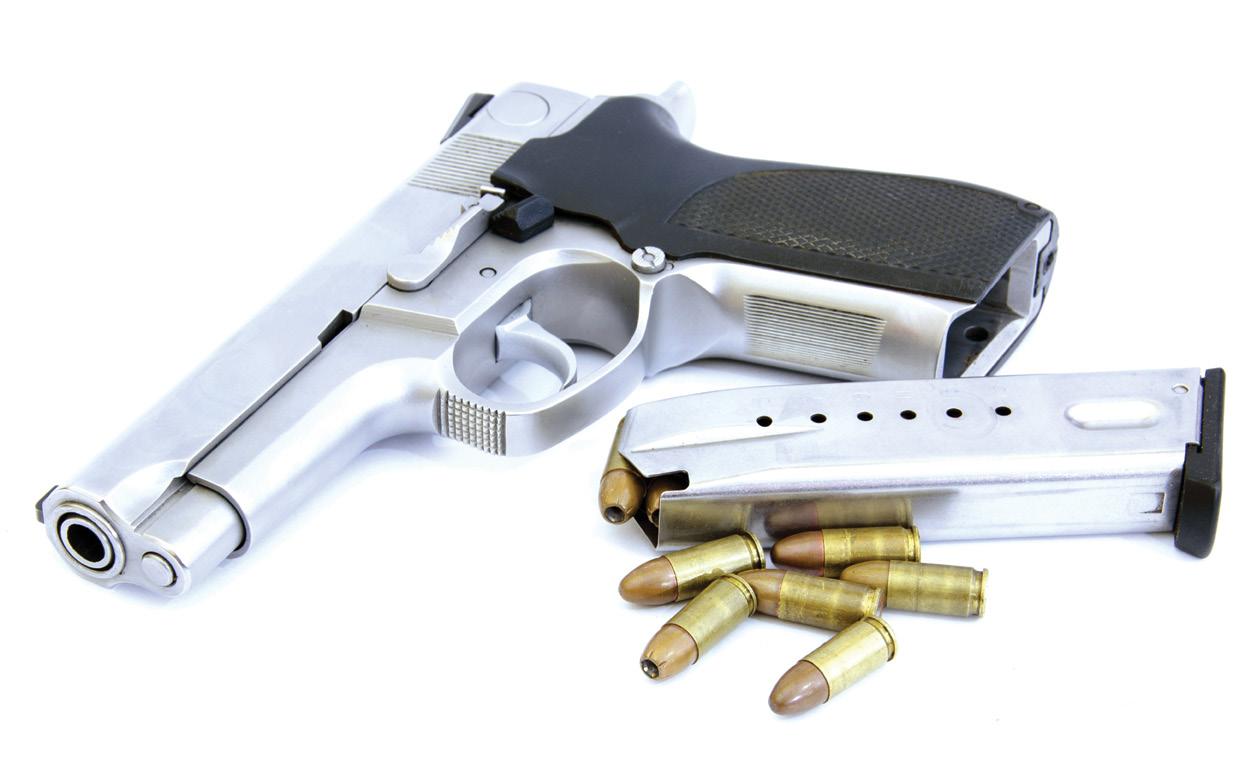
where we value discipline and community more than individualism and carelessness. We can only be free together.
The tools of peace are everywhere but are no longer valued or used. Violence Interrupters focus on teaching patience and tolerance. Victim Support focuses on not only justice but compassion for the injured and traumatized. Healing Hurt People teaches empathy to break the cycle of violence, recognizing that the victims of violence can become perpetrators of more violence. Community policing teaches police to be more communal and the community to police their own community. Restorative justice focuses the justice system on the responsibility of the lawbreaker and society to fix what was broken by the crime, rather than simply punishing. Criminal Justice does not fix society. Guns do not protect society. We must recognize that peace requires much more conversation, more personal responsibility, and more public involvement to take back our streets with Love. Ask Stevie Wonder, Love’s in need of Love today. •
3 US per capita rates of firearm death from suicide, unintentional deaths, child involvement in shootings, justifiable homicides, firearm deaths from legal intervention (law enforcement), and many mass shootings represent firearm deaths by citizens who have not been or will not be convicted of a prior crime.
6 Philadelphia Medicine Winter 2023 COVER STORY continued philamedsoc.org
PCMS INTERVIEW:
Benjamin Smood, MD
Resident-Integrated Cardiothoracic Surgery University of Pennsylvania, Department of Surgery
As the immediate past leader of the Resident/Fellow Section, Delegate to the House of Delegates, member of the AMA, etc., how has organized medicine impacted your career in medicine?

What are your hobbies and interests when you’re not working?
I enjoy running, hiking, and, most of all, spending time with my fiancé and our mini golden doodle, Springsteen.
Benjamin Smood, MD Cardiothoracic Surgery
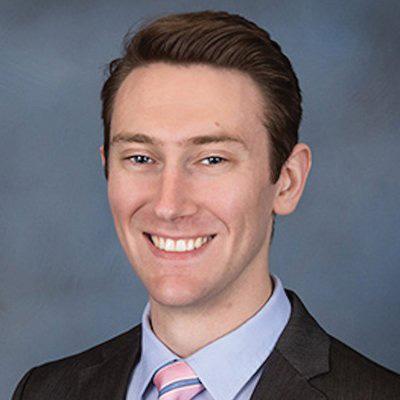
Resident
Benjamin.Smood@ pennmedicine.upenn. edu
(267) 624-3598
Organized medicine has allowed me to develop a better understanding and appreciation for what it takes to bring about true change in the field of medicine. Over the years, I have been inspired by mentors in organized medicine at the county, state, regional, national, and specialty society level, who endlessly strive to improve the care and outcomes of our patients, and the well-being of physicians.
What do you like most about practicing medicine so far?
The one thing I’ve enjoyed the most about practicing medicine so far is that every day I am reminded of how fortunate I am to get to do this for a living.
For what reason(s) did you become a member of the Philadelphia County Medical Society and what do you value most about your membership?
I am a resident in Philadelphia, and PCMS sets a standard of excellence for leadership in organized medicine. •
7 Winter 2023 : Philadelphia Medicine philamedsoc.org
NF2 BioSolutions
Accelerating Gene Therapy Research and Finding a Cure for Neurofibromatosis Type 2 (NF2)
by Nicole Henwood, MD
Four years ago, the path of my postresidency life unwillingly and dramatically changed course. In 2018, my son A.J. was diagnosed with Neurofibromatosis Type 2 (NF2). He was a happy and energetic 6-year-old boy who loved playing baseball and Minecraft, adopting animals, and was dreaming of becoming a Philadelphia Philly one day. I had noticed a small white patch of skin on his thigh when he was born, and a few years later two darker-colored cafe-au-lait spots, but I was reassured there was nothing to worry about. When he began school, the school nurse noticed his vision was slightly decreased at 20/30, but I thought all he needed was glasses. We went for an ophthalmology visit and unfortunately that day we were referred to a Will’s eye cancer specialist who suspected the “freckle” seen on his retina, along with the patches on his skin, were caused by NF2—a rare disease without a cure. His diagnosis was confirmed a few weeks later by MRI, and that day became the worst day of my life.
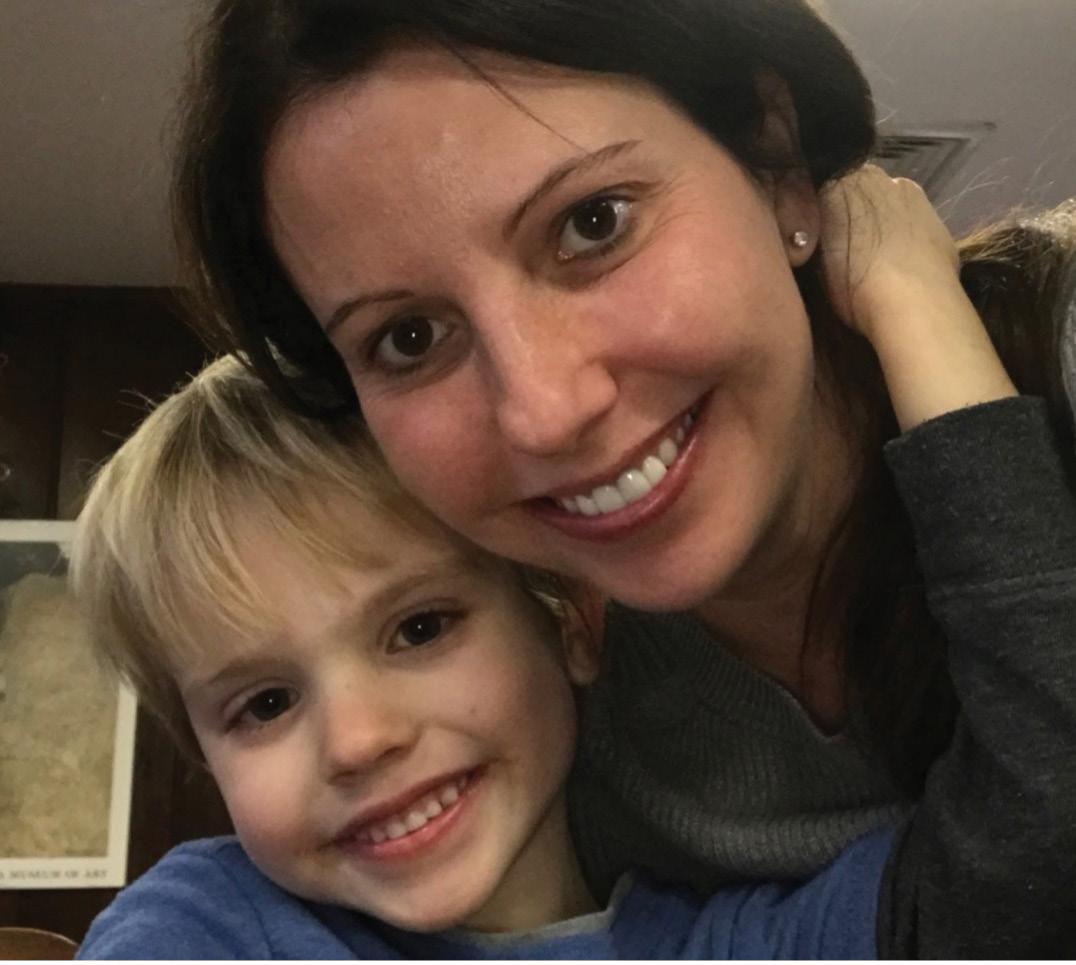
Neurofibromatosis Type 2 is a rare genetic disorder that affects approximately 1 in 30,000 individuals globally which classifies it as a rare disease. NF2 uniformly results in the growth of multiple tumors throughout the central and peripheral nervous systems, including schwannomas, meningiomas, and ependymomas. Over time, these tumors severely impact the quality of life of affected individuals, causing hearing loss, severe balance problems, facial paralysis, visual problems, and eventually death from high tumor burden. The cause of these tumors is a defect in the NF2 gene. The NF2 gene encodes for a protein called Merlin. Merlin functions as a tumor suppressor which in healthy individuals prevents the growth of tumors in these tissues. We soon learned what a cruel and relentless disorder NF2 is. Now 11 years old, A.J. still lives mostly symptom-free, but the tumors in his body continue to grow. They will destroy his senses and mobility over time if we don’t find a treatment.
NF2 is among 7,000 identified rare diseases. Patients with any rare disease face a harsh reality. The disease they suffer from competes for the attention of scarce resources. At present, only about 600 rare diseases are in trials. Pharmaceutical companies want to focus on research that can be monetized soon; the result is a huge unmet medical need in the rare disease patient community. I saw a glimmer of hope when I learned that many cancers harbor acquired NF2 mutations, including spontaneous vestibular schwannomas, meningiomas, and even subsets of mesothelioma, renal cell carcinoma, breast and prostate cancers. Perhaps we could convince others outside of the NF2 community to join our cause; this still remains to be seen.
For NF2 patients, observation, surgery, and radiation remain the only available options, and they are all poor choices, as they have high complication rates and are largely ineffective. With no FDA-approved therapy for NF2, patients and their families must become the driving forces behind any progress. For all these reasons, I decided to fight for a cure on my own. Shortly after A.J.’s diagnosis, I learned about another “rare” doctor-mom who raised millions of dollars to fund gene therapy research for Sanfilippo syndrome, a rare disease affecting her daughter. This is what we needed to do for A.J. Three months later I founded NF2 BioSolutions (nf2biosolutions.org), a nonprofit 501(c)3 public charity with the goal of accelerating gene therapy research and finding a cure for NF2. Our mission is to bring attention to NF2 and sponsor leading labs to focus on NF2 research with the goal of bringing NF2 gene therapy to the clinic. NF2 BioSolutions is the first organization to explore gene therapy—and now cell and immune therapies too—to fight NF2.
Today, NF2 BioSolutions is a globally-supported organization that has raised over $1million to date and funded breakthrough work and pre-clinical research with the support of leading experts in the field such as Dr. Gary Brenner:

8 Philadelphia Medicine Winter 2023
philamedsoc.org

9 Winter 2023 : Philadelphia Medicine philamedsoc.org continued on next page
NF2 BioSolutions Accelerating Gene Therapy Research and Finding a Cure for Neurofibromatosis Type 2 (NF2)
continued from page 9

10 Philadelphia Medicine Winter 2023 philamedsoc.org
FEATURE continued
“I am highly optimistic that this gene therapy strategy can represent an effective and safe therapy for patients with schwannomas – whether associated with NF2, schwannomatosis or sporadic schwannomas.”
— Gary J. Brenner, M.D., Ph.D., Associate Professor, Harvard Medical School Director and Director, Massachusetts General Hospital Pain Medicine Fellowship
Along with other advocates, I am proud to fight every day against this disorder. However, we need your help to find an effective therapy for A.J. and thousands of others afflicted with this disease. All donations to NF2 BioSolutions go directly to sponsoring research that could eventually save A.J.’s life and the lives of thousands of others.
NF2 BioSolutions has grown far beyond me since I started it four years ago from my home in West Chester. Building on the love we have for those suffering from NF2 and with support from hundreds of people whose lives have been affected by the disease, NF2 BioSolutions has launched and currently is supporting several novel therapy approaches to treat NF2 tumors. Since we don’t yet know what approach will have the best and most lasting treatment results, we are supporting multiple pre-clinical research programs in parallel. Some have the goal of killing existing tumors; some attempt to stop tumor growth; and, some seek to prevent new tumors from forming.
The research funded to date has yielded promising results in working toward a therapy for NF2 and in the treatment of rare diseases more broadly. In addition to our gene therapy program, we have made progress in the development of key tools and resources including 3D imagery and volumetric analysis of NF2 tumors and the generation of NF2 animal models. We also have supported the development and sharing of the world’s first open-access NF2 biobank with a growing number of cell lines and continuing sources of fresh tumor tissue. We keep researchers connected and focused on a cure for NF2 and share the tools and data needed for impactful results. However, we still have a lot of work ahead of us.
Gene replacement therapy and other emerging therapies have had a lot of success in other types of genetic mutations. We plan to replicate this success and jump-start gene therapy research for NF2. We will continue to bring together groups of researchers, doctors, patients, and advocates, combining our minds and experiences to make advances and leave no NF2 patient behind. But we need as much support as we can get to fund the research that will determine how to develop a cure.
While my focus is leading NF2 BioSolutions and finding a cure for A.J., I struggle balancing it with my busy life here in West Chester, Pennsylvania. I am an anesthesiologist at Premier Surgery Center of Exton, a mom to A.J. and his big sister Brooke too. I know my time with A.J. is precious, and I try to spend as much as I can with him. We enjoy planning fun adventures
around Chester County and beyond knowing one day he may not see or hear as well as he does today. We recently visited Fenway Park in Boston, and the Eiffel Tower in Paris. Next on our list are trips to see Niagara Falls and the Grand Canyon.
My fellow Chester County physicians, my call to action is to please help me find every NF2 patient and make them aware of our efforts and help us find this much needed work. Also, if you have a few hours a year or each month, there are many ways to become involved in NF2 BioSolutions and help find a cure for this debilitating disease.

Visit the Take Action page on our website nf2biosolutions. org to see how you can help or send me a message at nicole@ nf2biosolutions.org. Visit our Donate page if you would like to support research with a tax-deductible financial gift.
Working together as a team, we can put an end to NF2 suffering. •
philamedsoc.org 11 Winter 2023 : Philadelphia Medicine
Venue Rule Change Will Increase Cost of Healthcare and Threaten Patient Access in Pennsylvania
by Curt Schroder Executive Director
PA Coalition for Civil Justice Reform
Closing of specialty services, rising health care costs, increasing liability premiums and a lack of health care professionals. That’s exactly what Pennsylvania was facing nearly 20 years ago. And now, because of actions taken by the state Supreme Court regarding venue in medical liability cases, the Commonwealth is at risk of repeating history.

Venue determines where in Pennsylvania a civil case can be filed. Venue shopping is when plaintiffs’ attorneys file civil lawsuits in Philadelphia and other high verdict jurisdictions in search of large jackpot verdicts–even though the location of the court has no connection to the case.

This past August, the state Supreme Court rescinded the venue rule for medical malpractice cases – which had previously stated that medical malpractice cases had to be tried in the county in which the alleged incident took place. The recission of this rule allows forum shopping to once again take place in the Commonwealth.

The original venue rule was put in place in the early 2000s to help address a health care crisis that was gripping the state. At the time, rampant venue shopping had led to skyrocketing liability premiums, which in turn was driving physicians and specialists out of Pennsylvania and causing hospitals and medical professionals to curtail services and close maternity wards. The issue rose to such a critical level that the state Supreme Court, Governor, and General Assembly came together to stop venue shopping. In 2003, the Supreme Court adopted a rule requiring all medical liability cases be filed in the county where the alleged cause of action, or injury, occurs.
In the years since the rule was implemented, the rule has done exactly what it was designed to do. The Commonwealth’s medical liability environment was right sized as the number of medical liability cases filed in Philadelphia and other high verdict counties plummeted and medical liability premiums stabilized.
Despite the success of the rule, over the past several years, plaintiffs’ attorneys launched a full-scale campaign to have it reversed in order to go back to the days of venue shopping in search of the bigger jackpot verdicts. For years, plaintiffs’ lawyers have argued that they can only obtain justice for their clients in Philadelphia and other locales known
FEATURE philamedsoc.org 12 Philadelphia Medicine : Winter 2023
EXPERTS WHO KNOW YOU BY HEART

for jackpot verdicts. They fail to mention, however, that the larger the verdict, the greater their personal payday. If plaintiffs’ attorneys are truly concerned about recovering for their injured clients, they could ensure the plaintiff takes home more by reducing the percentage of their contingency fee. That would provide a substantial boost in the portion of the recovery benefiting the plaintiff. Yet, they have continually refused to reduce contingency fees. The trial bar’s true interest is in lining their own pockets. Unfortunately, however, the success of the rule ultimately led to its demise and the trial bar was successful in its fight to convince the Supreme Court to take action on this issue. While this rule change is a huge win for the trial bar, it will have dire impacts for residents throughout the state.
The Commonwealth already suffers from the second highest medical malpractice payouts in the nation and is in the midst of a clinician shortage. Additionally, a recent report from the U.S. Chamber of Commerce’s Institute of Legal Reform has identified Pennsylvania as a top state for nuclear judicial verdicts. The report found that more than half of the Commonwealth’s nuclear verdicts, which are defined as a jury verdict of $10 million or more in personal injury and medical malpractice lawsuits, took place in Philadelphia. Now that the Supreme Court has paved the way for plaintiffs’ attorneys to steer cases to high verdict courts, the number of nuclear verdicts is expected to go up. And that won’t be the only negative impact. A recently released independent actuarial report commissioned by Senate Judiciary Chair Lisa Baker, found a rule reversal would lead to a substantial increase in premiums. The independent report, which was completed by Oliver Wyman Actuarial Consulting, Inc., found a return to forum shopping would lead to an average
of a 3.1 – 4.7 percent increase in premium rates for hospitals and a 4.9 – 7.2 percent hike in liability premiums for physicians across the Commonwealth. However, some counties would be much harder hit. Lancaster County, for example, could expect upwards of a 73 percent premium increase for hospitals and an 82 percent liability premium increase for physicians. Other counties mentioned in the report that would see substantial premium increases included Bedford, Chester, Clinton, Lycoming, Montgomery, Potter, Susquehanna, Tioga, and Venango. Additionally, the report concludes that an increase in professional liability premiums would lead to a decrease in the accessibility of healthcare services and would have a significant impact on the cost of medical care in the state.
The Supreme Court’s unilateral decision to undo two decades worth of legal stability in medical malpractice cases will have longterm ramifications if left unchecked. The judicial branch should not have the exclusive authority to establish venue policy. Clearly, action is needed to prevent another health care crisis. The Pennsylvania Coalition for Civil Justice Reform is encouraging lawmakers to address the venue issue once and for all to bring fairness and balance back to the state’s legal environment. We urge you to join us in this effort by reaching out to your state representative and senator to convey the negative impact the venue rule change will have on the Commonwealth’s health care landscape and ask for their support on this issue. It is critical that the General Assembly acts quickly in the upcoming legislative session. Maintaining access to affordable, quality health care is too important to risk by allowing venue shopping to run rampant.

13 Winter 2023 : Philadelphia Medicine
•
EXPERTS WHO KNOW YOU BY HEART Our cardiology experts never miss a beat when it comes to your heart health. They’ll be there for you, whatever you’re facing— and put everything they’ve got into healing you Discover Prime Healthcare Pennsylvania Region’s award- winning cardiology services. Connect with one of our cardiologists today!
philamedsoc.org
Politics & Medicine FEATURE

by Larry L. Light Retired PAMED Lobbyist

We’ve known for a while that November 8, 2022, would be a very big day in Pennsylvania. The widely anticipated mid-term elections were long a focal point for both Democrats and Republicans, especially after the controversial 2020 Presidential election. With statewide contests for two open seats, Governor and US Senator on the ballot, Pennsylvania was in the national political spotlight.
In this pivotal election, Pennsylvania voters selected 203 State Representatives, 25 State Senators and 17 Members of Congress along with the Governor, Lt. Governor and a US Senator. All of the legislators, except the new US Senator, will be elected to serve their constituents in reapportioned legislative districts with new boundaries realigned by the decennial mapping process. Many of the “newly elected” legislators will be incumbents, experienced both in the legislative process of introducing and voting on bills and amendments. They will also be experienced in providing constituent services. And they will be familiar with the lay of the land in the capitol building when they arrive there for legislative sessions.
Six state senators and 40 representatives will be leaving legislative service thru retirements or primary election losses in 2022; more will join them after the general election votes are tallied. That is a significant number by any measurement and an unprecedented change in our representative government. By definition, all of the first term legislators will be novices in the practical realities of the legislative process, and they are all facing a very sobering reality check over the next two years. That will hit the hardest after the victory celebrations wind down. Swearing in day will be a celebratory occasion that is well deserved. After all, they won the election.
Newly elected legislators face a daunting task in getting organized during their first months in office. They are beginning a job that is closely scrutinized by the public and the media. They will be one among many legislative colleagues, most of the others having significant seniority in the position. Things like parking spaces, hiring staff, new cell phones and computers, how to get bills and amendments drafted, how to read legislation and even how to dress appropriately are all part of the on-boarding process.
And lurking in the background is the new challenge of getting reelected in the very near future.
They will already know that the pay is pretty good. The annual salary for rank-and-file state legislators was $95,432 in 2022. For members of Congress, it was $174,000. Though, their salary cannot increase during their elected term of office.
So, they decided to run for office and then they won their election, likely surviving a primary election opponent from their own party and then an opponent in the general election. Maybe they earned some notoriety by defeating an incumbent. They ran with a platform of policy principles and ideas. They will be energized to have an impact in the legislative body to which they were elected.
Then, at some point, they will come to realize: They no longer control their own lives or their own daily calendar. Legislative leaders set the schedule of session days and on those days the same leaders and committee chairs set the times for committee meetings, opening of session, caucus meetings and when session will adjourn for the day. If you want to actively engage in the legislative process, participation in those events is highly recommended. Hint: Don’t schedule a dental appointment for a session day.
They will have to make significant changes in their professional and personal life as they transition to the legislative schedule. Given that legislative candidates bring some record of professional accomplishment to their campaign for office, the individuals are usually active in their profession and in their community. Now, session days in Harrisburg and long days of meetings and social functions back in their district will compete for their time. Hint: The strength of your background was one of the more important reasons that you won the election. But now you are known as a legislator, accountable to the public and the media.
They can’t do it all. They are now a boss, a self-employed supervisor, responsible for running a district office (or maybe two of them) and a capitol office. Although their employees are paid from state funds, each legislator hires staff to run their capitol and
So, You Won the Election 14 Philadelphia Medicine Winter 2023
district offices and to help with constituent work. Hint: Some of the “volunteers” who worked in your campaign are likely to want those jobs.
It will take hard work to fulfill their campaign promises. Legislation they promised to support may not be brought to the floor for a vote. Legislation they promised to introduce may be buried in committee, perhaps for years. Hint: Keep working on your priorities but also find new viable issues that will help your constituents.
Legislation and votes in Harrisburg make headlines but poor constituent service from their district office gets noticed. Hint: Hire good district staff, people who will be loyal to you and the constituents in your district.
One of the most important tasks is securing local district office space. Hint 1: Find a location somewhere central in your legislative district to help advertise that you are accessible. Hint 2: Legislative funds pay for the rent or lease, but if the amount is remotely extravagant you will get negative publicity.

A seemingly trivial and seldom discussed big decision is where they will stay overnight when they are in Harrisburg for session. Hotels are often an option, and they usually offer a “government” rate that won’t overwhelm your allotted expenses. Some legislators end up in houses or apartments where a legislative colleague rents out space to a friendly group. Hint: You will decide and then probably change 6 months later when you find someplace better suited to your needs.
Campaign season never ends. With another campaign due to start only 12 months in the future for House members with 2-year terms and only 3 years away for Senators with 4-year terms they will have to put together a sustained plan to raise campaign funds. At the same time, it is important to transition from the role of candidate (an individual) to the role of policy maker within their party caucus and mesh that into your constant campaign mindset. Hint: If you liked them, keep your campaign treasurer and other top volunteers busy planning your first “re-elect” campaign.
The legislative process is challenging. How frustrated will they be when other legislators who they have to work with, even those from their own party, don’t agree with the priorities and projects that they believe they must champion. Hint: Don’t take it personally.
That week-long family vacation planned every year for when the kids get out of school in June will likely move to August. In Harrisburg, June is for busy and long session weeks devoted to passing a new budget, and sometimes it doesn’t get done until after the July 4th holiday. Freshman legislators have to be there to vote, although they won’t have much, if any say, as to what is in the budget. Hint: Use the time to learn.
Committee assignments are important. Caucus leaders dole out committee assignments to their party colleagues. The general intent is to match the new legislator with a committee that will allow them to make a difference in their home district. That may or may not be a committee of interest to the first term legislator. Hint: Talk to veteran legislators and learn which committees can help your district and which will allow you to focus on your interests. They may not be the same.
The legislative process is complex. In government class it sounds easy. The House and Senate each pass the legislation and the Governor signs or vetoes it. The hidden truth is that it is far easier to defeat than pass legislation. To enact a law you must win a vote at every procedural step, from committee to final passage in both chambers and then approval by the Governor. If the proposal is controversial, every one of those steps will be aggressively contested by advocacy forces or the other political party. The opposition only has to win one time. Hint: Whether you are trying to pass or defeat a bill, don’t do it alone.
Hopefully, despite these challenges the new legislators will not lose their enthusiasm for the challenge of making a difference. Elected office is a rewarding calling and, whatever their political views, we need dedicated public servants. •
15 Winter 2023 : Philadelphia Medicine philamedsoc.org
mRNA Vaccines Have Saved Millions of Lives –What’s Next
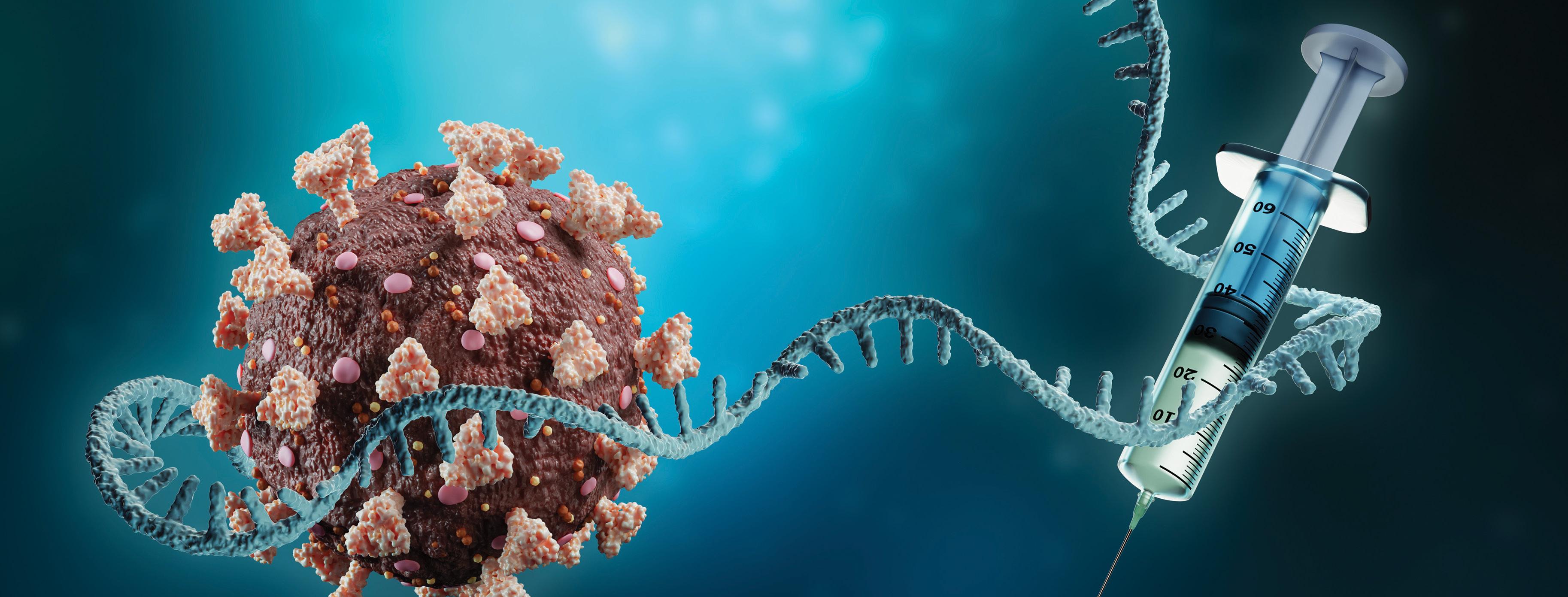 by Kent Bottles, MD
by Kent Bottles, MD
The rapid development of mRNA vaccines against the SARS-CoV-2 coronavirus is truly one of the most spectacular scientific achievements of all time. A 2022 Lancet Infectious Diseases UK global study estimated that the vaccine saved 19.8 million lives over a one-year period from December 8, 2020 to December 8, 2021. Although the production of mRNA vaccines in just one year after the world learned the genetic sequence of the virus is by far the fastest vaccine development on record, this success story has much to teach us about the complicated and long process of all innovation in science and medicine.
Whenever a significant scientific breakthrough occurs there is a tendency to identify a genius individual who is celebrated and written into the history books as a hero. Think Edward Jenner and the small pox vaccine or Thomas Edison and the light bulb. Here in Philadelphia there is talk of future Nobel Prizes for Katalina Kariko and Drew Weissman of the University of Pennsylvania whose important contributions to mRNA science helped save those nearly 20 million lives.
Society’s need for heroes obscures the reality about how scientific innovations actually happen. A Nature article titled The Tangled History of mRNA Vaccines paints an alternative picture of decades of basic science research, twists and turns, bitter personal rivalries, and incredible persistence to get to the point that Kariko and Weissman could succeed in developing a way to get mRNA into human cells without eliciting a fatal immune response. mRNA was first discovered in 1961, but for decades researchers had difficulty studying it because of the molecule’s incredible instability. The basic science behind the development of the lipid nanoparticles that encapsulate the mRNA in vaccines dates back to 1965.
The researchers who made important contributions to the development of mRNA vaccines did not always play nice and get along with each other. As a graduate student at the Salk Institute in California, Robert Malone in 1988 inserted strands of mRNA mixed with fat into human cells that then produced proteins. Tensions and disagreements between Malone and his academic supervisor led to Malone dropping out of the PhD program, and patent

agreements between Salk and an involved biotech company did not include Malone. Malone who did complete an MD degree at Northwestern has called himself “the inventor of mRNA vaccines” and claims to have been written out of history. He also recently created a controversy when he was interviewed on the Joe Rogan podcast on Spotify and attacked the safety of mRNA vaccines. That interview led to protests from hundreds of physicians about Malone’s vaccine misinformation on Spotify and Neil Young and Joni Mitchell asking that their music be removed from the popular internet platform.
No one person invented the mRNA vaccine. As the Nature article makes clear many investigators made significant contributions that paved the way for the Moderna and Pfizer vaccines. Kariko makes this point when she says, “Everyone just incrementally added something — including me.” One of the pioneers behind the development of lipid nanoparticles, Pieter Cullis, agrees when he states “You really cannot claim credit, we’re talking hundreds, probably thousands of people who have been working together to make these LNP systems so that they’re actually ready for prime time.” Many do not realize that the development of the lipid layer that coats the mRNA in the vaccine is an essential element for the vaccine to work in humans.
Many of the investigators who made important discoveries about the basic science of mRNA and lipid nanoparticles did not know if and how their work would ever contribute to medical therapies. Most basic scientists are really motivated by curiosity about how nature works, and they are now pleasantly surprised that mRNA has saved those 20 million lives. In the early days of mRNA research nobody really thought about vaccine developments as a possibility. The Nature article quotes one scientist who states “RNA was so hard to work with if you had asked me back then if you could inject RNA into somebody for a vaccine I would have laughed in your face.”
Politicians and bureaucrats who are deciding where to put research dollars would be well advised to understand that one cannot predict which basic projects will result in “useful” results that can be applied in the clinical setting. The track record of prestigious institutions such as Harvard and University of Pennsylvania is not
16 Philadelphia Medicine Winter 2023 FEATURE philamedsoc.org
impressive in this regard. The Harvard Technology Development Office did not patent the early RNA research and gave away the reagents to a biotech startup company. The company sent Harvard a case of Veuve Clicquot Champagne in return. The University of Pennsylvania famously in the late 1990s did not support Kariko and demoted her with a pay cut. They also did not recognize the importance of her work and sold off some early patents. Kariko’s belief in her work and perseverance in the face of rejection is truly remarkable and admirable.
Lessons learned from the “tangled history of mRNA vaccines” have important public policy ramifications. Steven Johnson in his book Extra Life makes the case that “network narratives” are more accurate than “genius narratives” for understanding scientific innovation and medical breakthroughs. A breakthrough is often just the latest in a series of small incremental advances, and the general public does not understand this fact. A two-year internet search revealed 1096 media citations over a 2-year period for the word breakthrough, and the public love of moon shot research (think Joe Biden’s cancer program) endanger funding for the necessary but unsexy small incremental research projects. Behind every home run like the mRNA vaccine in addition to many basic science researchers, there are connectors, amplifiers, funders, champions, and evangelists who are necessary if the breakthrough is to benefit society. And many of these network roles are played by non-scientific individuals.
In addition to forever transforming the vaccine field, mRNA has other potential uses in medicine. mRNA is involved in
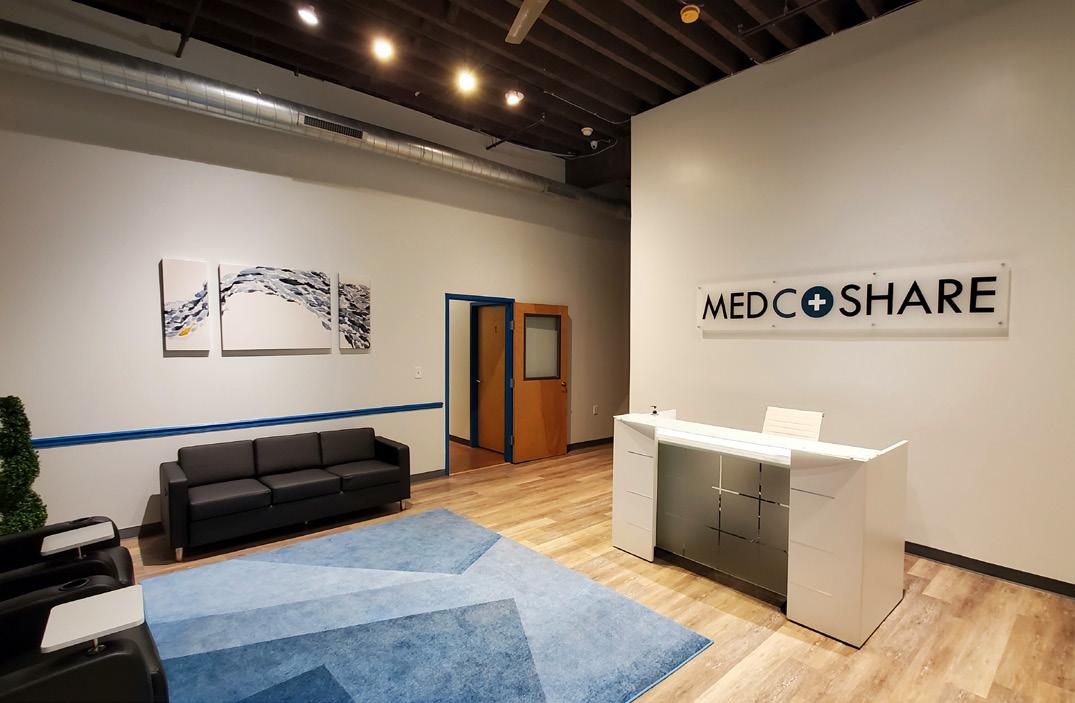
almost all aspects of human cell biology, and important research is on the way to better understand its function. mRNA can make antigens for vaccines, antibodies, cytokines, and other immune proteins, and pharmaceutical companies are studying ways that mRNA could be leveraged in cancer immunotherapy, other infectious diseases, cystic fibrosis, multiple sclerosis, allergies, diabetes insipidus, anemia, myocardial infarctions, and genetic reprogramming. Scientists are learning how to control the amount of protein manufactured , how long it lasts, the best route of administration, which cells express the protein, and whether the mRNA produces protein activates or suppresses the immune system.“The versatility of mRNA creates a huge design space. We have designed a diversified toolbox and by mixing and matching the modules we can design mRNA with the features we need for a particular purpose. It is a bit like writing code — by mastering programming language that is rich in terms, one can give any instructions one wants,” states Ozlem Tureci of BioNTech in a Scientific American article.
mRNA vaccines have saved millions of lives from the current pandemic, and their development highlights the complicated and convoluted path that is behind the story of any scientific breakthrough. Thousands of scientists and lay individuals have made small incremental contributions that make home runs in medicine possible, and adequately funded basic science research is needed in order to create new medical treatments as we better understand the basic biology of the human being.
• philamedsoc.org 17 Winter 2023 : Philadelphia Medicine MEDC SHARE No long-term leases • Rent rooms part-time or full-time • Private Practice Accelerator Flexible & Affordable Exam Rooms for Rent 2 week no-obligation FREE TRIAL Fully furnished/equipped private exam rooms with sinks Provider office space with separate entrance to allow record entry and privacy from waiting area Secure storage for your equipment and materials Cleaning service and office products resupplied Secure document and sharps disposal 1st of its kind in Philadelphia & South Jersey medcoshare.com Locations in Philadelphia, PA and Marlton, NJ (267) 552-1290 Healthcare CoWorking
First Ever Hybrid House of Delegates in 2022 Wraps Up

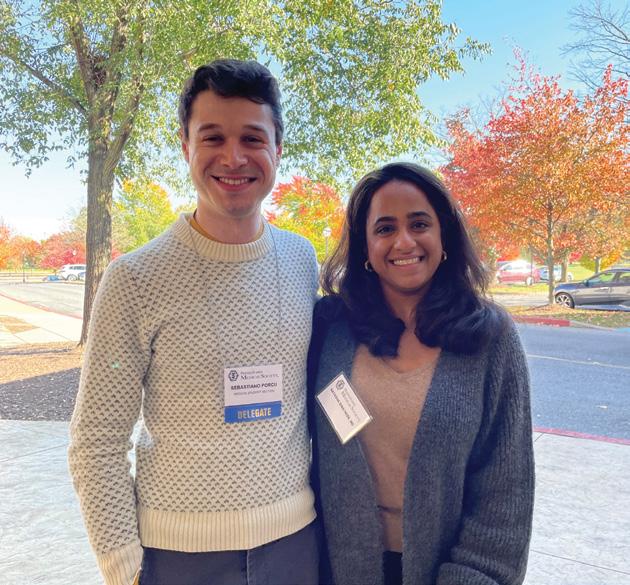 by Mark C. Austerberry, PCMS Executive Director
by Mark C. Austerberry, PCMS Executive Director
On Saturday, October 22nd, the Pennsylvania Medical Society held its very first hybrid House of Delegates (HOD) meeting, allowing attendees to participate both remotely and on-site at the Hershey Lodge. This meeting was the first of its kind for PAMED. In addition to robust discussion and commentary online ahead of the HOD, delegates had a healthy and productive debate on many of the issues that face health care. Below is a look at some of the resolutions that the delegates either adopted or directed to PAMED’s Board for decision or further study.
COVID Vaccine Policies - Delegates voted to Not Adopt opposition to mandatory Covid vaccination policies and continue support for rigorous informed consent with respect to Covid vaccines. Delegates believed overwhelmingly that PAMED should, as a public health organization, continue to support vaccination policies.
Removal of Vaccine Exemptions - Delegates voted to Adopt as Amended the removal of non-medical childhood vaccine exemptions to support medical-only vaccine exemptions.
Pharmacy Childhood Vaccine Reconciliation - Delegates voted to Refer for Study the requirement for pharmacies giving childhood vaccines to reconcile them in PA-SIIS. PAMED will support and work with local agencies to encourage state-wide reconciliation of vaccines to avoid med errors.
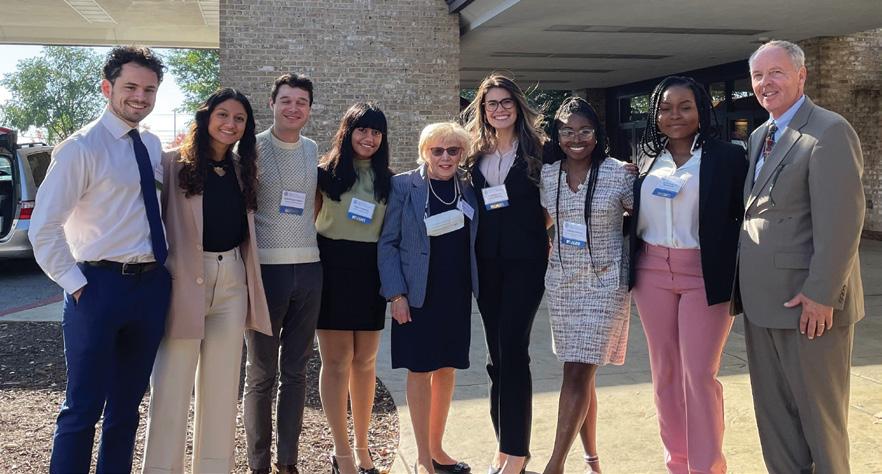
Pharmacists Scope of Practice - Delegates voted to Adopt as Amended support of legislative efforts by the Pennsylvania General Assembly specifying that pharmacists notify the prescriber if intending to refuse to fill lawful prescriptions in an effort to increase patient safety.
Expansion of Optometry in Practices - Delegates voted to Adopt as Amended in support of the Pennsylvania Department of Health in the prevention of the inappropriate expansion of optometry outside of scope, i.e., surgical and medical practice.

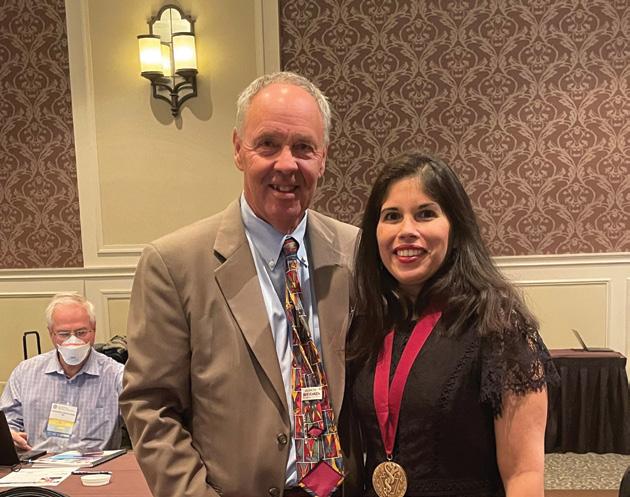
Telehealth for Psychiatric Care - Delegates voted in favor of the Reference Committee’s recommendation to Not Adopt PAMED’s support of telehealth over on-site services for the delivery of psychiatric care. Delegates and the Reference Committee believe tele-health is an important option for care but should not be the only or preferred option.
Support Single-Payer Healthcare - Delegates voted to Not Adopt the removal of opposition to single-payer health care system. The reference committee suggests aligning with the AMA’s stance of not favoring a specific Healthcare Delivery Model was supported by many of the delegates that were in attendance both virtually and in person as reflected in the final vote.
18 Philadelphia Medicine Winter 2023 FEATURE philamedsoc.org
4th yr Med Student Sebastiano Porcu & his wife, Resident Physician Dr Natasha Hede
Philadelphia Medical Student Delegation
Parental Leave for Medical Students and Residents - Delegates voted to Adopt as Amended with the Reference Committee’s recommendation to support efforts by the American Medical Association (AMA) on the national issue of parental leave for students and residents. The AMA currently has policies that support parental leave for Medical Students and Residents, which should be consulted and reviewed.
Hazard Pay for Residents in National Emergencies - Delegates voted to Not Adopt this resolution, which called on PAMED to support hazard pay provisions for resident physicians.
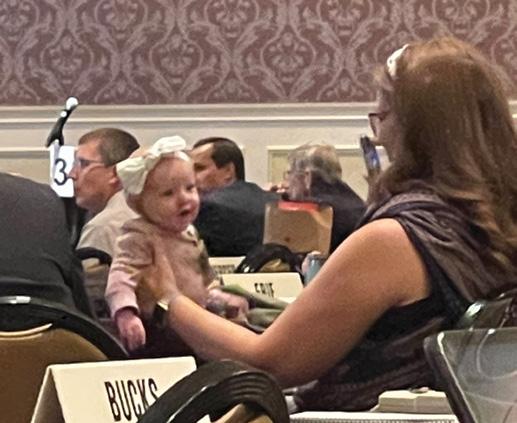
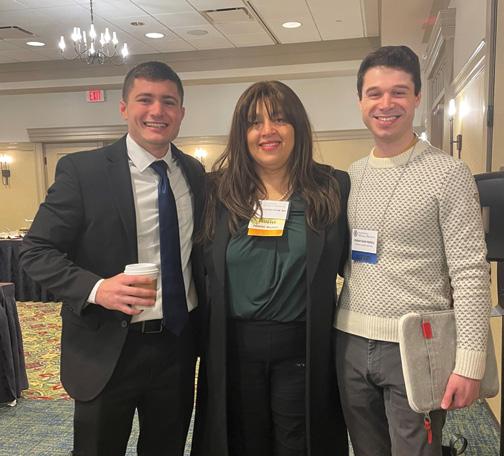
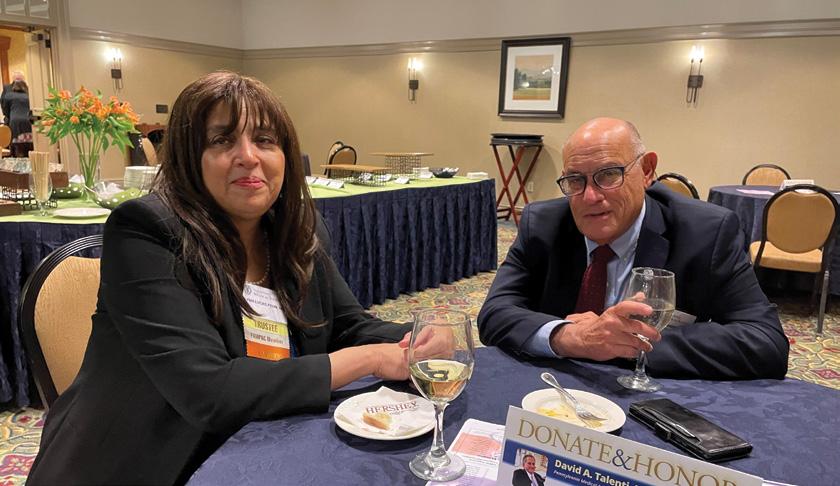

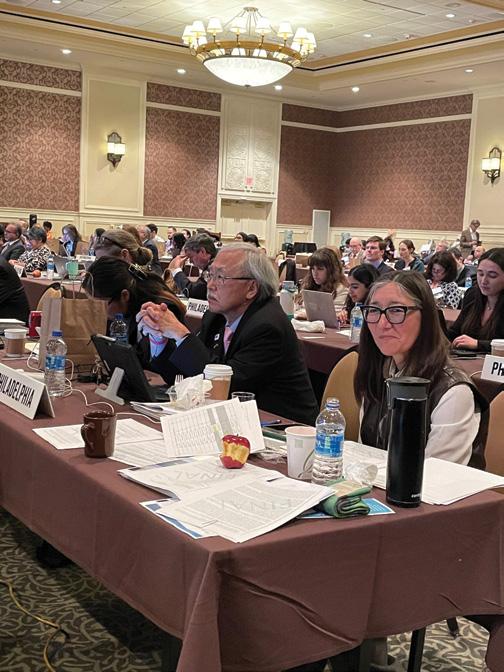

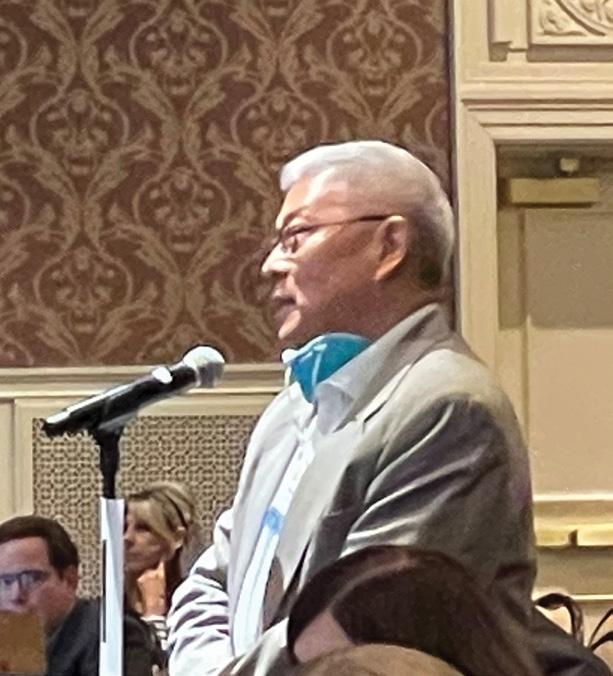
Removing Barriers in the OR for Women Donning a HijabDelegates voted to Refer for Study accommodations for people donning a hijab in the operating room. The PAMED Board of Trustees will study a) the removal of barriers in medical education and practice for hijab-wearing women as well as b) advocacy as it relates to policy changes at medical schools and hospitals in the Commonwealth of Pennsylvania to include accessibility to accommodations, including non-transparent surgical hoods that cover the head and neck and/or medical-grade lowlint, light-colored, tightly woven, washable hijabs.
Creation of Access to Safe Quality Care Coalition - Delegates voted to Adopt as Amended the creation of a coalition of Pennsylvania Medical and Specialty Societies modeled after New Jersey’s access to care coalition, which includes a public facing website, with a mission to ensure the continued high quality of care provided by a physician-led team approach to medicine.
Analyzing the Financial Components of Graduate Medical Education in Pennsylvania to Ensure that Resident and Fellow Physician Compensation Equitably Reflects Their Workforce Contributions - Delegates voted to Refer for Study the issue of graduate medical education compensation in Pennsylvania. PAMED’s Board of Trustees will study the current compensation and financial benefits provided to resident and fellow physicians and whether PAMED should embark on advocacy in that regard.
Support for Safer Supply Testing - Delegates voted to Adopt as Amended support for safer supply testing devices for substance use. PAMED supports legislation removing Fentanyl Test Strips and other medical or scientific devices and methods which test for toxic or hazardous substances from the list of drug paraphernalia under the Controlled Substance, Drug, Device and Cosmetic Act of 1972 and will forward the issue to the AMA at the next appropriate AMA meeting.
Support for Protecting the Physician-Patient Relationship
Regarding Reproductive Health Care - Delegates voted to Adopt as Amended support for protecting the physician-patient relationship in matters specific to reproductive health care. PAMED will rescind the following policies: 5.998 Abortion, and 5.999 Testifying Before State Legislature. In addition, PAMED supports shared decision making for the physician-patient relationship as it applies to all reproductive health, including abortion. PAMED opposes legislative measures that
19 Winter 2023 : Philadelphia Medicine philamedsoc.org
continued on next page
Dr. Tsou
Nikki Perry Bryce
First Ever Hybrid House of Delegates 2022 Wrap Up

continued from page 19
Philadelphia County Physician Elected Vice President of the Pennsylvania Medical Society

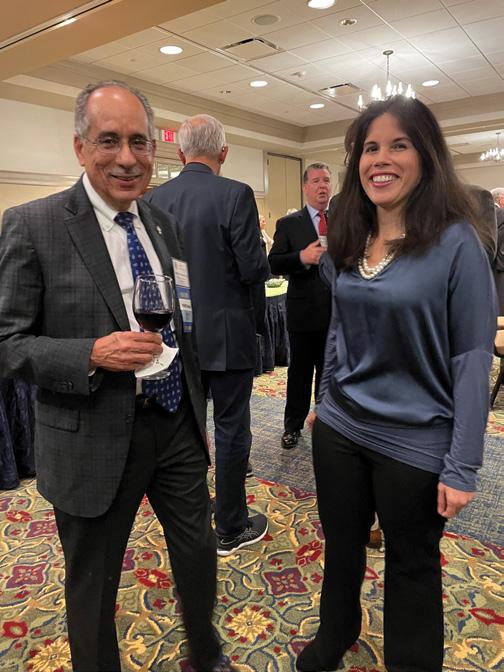
Lynn Lucas-Fehm, MD, JD, was elected by a statewide group of physicians to serve as vice president of the Pennsylvania Medical Society (PAMED) at the annual House of Delegates meeting in October. Dr. Fehm is Clinical Director of Breast Imaging at Abington Jefferson Health. Dr. Fehm has been a devoted member of The Philadelphia County Medical Society (PCMS), Pennsylvania Medical Society (PAMED) and the American Medical Association (AMA) since 1986. She served several terms on the PCMS Board of Directors as well as PCMS President. At the state level, Lynn is the former 1st District Trustee and was re-elected in 2019 to a second term. With multiple roles and responsibilities over the years within PCMS and the PAMED, Lynn has repeatedly proven herself as an outstanding leader who has served the house of medicine with distinction, and embraces every task set before her with intensity, fairness, and an open mind. “I am honored to have been elected as the next vice president of the Pennsylvania Medical Society by my peers. I have been fortunate to have wonderful mentors who have moved the society forward and am looking forward to leading and serving the physicians and patients in Pennsylvania.” Dr. Fehm has an extraordinary combination of talent, experience and intelligence that will serve every PAMED member well, especially in these very difficult times. Congratulations. •
criminalize physicians for decisions with patients regarding the provision of reproductive health care as well as measures that expose patients to criminal or civil consequences due to receiving medical care.
Pain Management for Long-Acting Reversible Contraception and Other Gynecological Procedures - Delegates voted to Adopt as Amended the support for training physicians on the use of local pain control techniques for office-based gynecological procedures along with the discussion of pain control options, risks, and benefits with patients of such techniques. PAMED also encourages further research into evidence-based anesthetic and anxiolytic medication options for long-acting reversible contraception procedures and other office-based gynecological procedures.
Role of Health Systems Solutions in Preventable Medical Errors - Delegates voted to Adopt as Amended the recognition that preventable medical errors are not solely due to individual responsibility but also to health systems that need to be made safer. PAMED
will encourage institutions to make health systems safer by: 1) Viewing medical errors as challenges that must be overcome, 2) Fostering a culture of safety that focuses on system-based improvement, 3) Encouraging all individuals on the healthcare team to play a role in making the provision of healthcare safer for patients and healthcare workers, 4) Implementing voluntary, anonymous or confidential error reporting systems and protecting them from legal discovery. Delegates voted to oppose the use of criminal penalties in errors of medical decision-making.
Physician Contract Mandates and Safeguards Regarding Supervision of Non-Physicians - Delegates voted to Adopt as Amended support for physicians in contract mandate issues and safeguards as it relates to the supervision of non-physician practitioners. PAMED will support whistleblower protections for physicians who report unsafe care provided by non-physicians to the appropriate regulatory board.
OR Medical Waste and Topical Drug Waste Reduction - Delegates voted to Adopt as Amended support for medical waste reduction in the OR through a multidisciplinary task force which will identify and promote best practices to minimize medical waste as well as identify and eliminate barriers in existing state laws, regulations, and healthcare organizational policies to achieve the goal of reducing medical waste related to medical procedures. PAMED will partner with AMA to craft state legislation permitting the dispensing of multi-dose medications upon discharge from healthcare facilities as well as the use of multi-dose medications for multiple patients in accordance with safe handling and dispensing protocols.
State Bypass of Physician Authority - On several occasions, the state legislature has raised the issue of physicians’ use of off-label medications in the treatment of COVID-19. This resolution, Adopted as Amended, will help to clarify PAMED’s position that off-label use of FDAapproved medications is appropriate provided the use is based on sound scientific evidence and for which the safety and efficacy have already been demonstrated.
Voter Registration for Patients - With the General Election less than two weeks away, Delegates voted to Adopt as Amended support for non-partisan efforts that provide the necessary resources to help patients with voter registration and civic participation to those physicians who wish to engage in this activity. PAMED also supports efforts to address social and structural determinants of health by encouraging its members to engage in the electoral process.
Proceedings and Actions of the 2022 HOD will soon be available online at www.pamedsoc.org/HOD. •
20 Philadelphia Medicine Winter 2023 philamedsoc.org
FEATURE continued
Nikki Perry Bryce
Adult Pennsylvanians Working With Leaded Materials May Be Occupationally Exposed To Lead
by Remy Babich, PhD, Katie Sneeringer, DrPH, and Stephanie Hasanali, PhD
Lead is a naturally occurring, toxic metal found in the Earth’s crust, and exposure is associated with many negative health outcomes. It has been traditionally used in pipes, paint, and gasoline due to its resistance to corrosion, malleability, and other properties. Although the use of lead has been banned in many materials, it is still used as an additive in battery manufacturing, bridge paint, and metal alloys. This creates the need for occupations in which the disposal, maintenance, production, and recycling of lead materials occurs. The risk of lead exposure and associated adverse health effects is high among workers within these occupations. It is an issue that needs to be prioritized and addressed, through collaborations of multiple agencies, to protect the wellbeing of the Pennsylvania (PA) workforce.
Individuals working in furniture restoration, construction and automobile repair, metal smelters and foundries, bridge sanding and painting, and battery manufacturers are among those at greatest risk. These industries employ upwards of half a million people in PA, making workplace lead exposure surveillance a primary concern. Monitoring workplace lead exposure can be accomplished by taking a venous blood sample to measure blood lead levels (BLLs). According to the National Institute for Occupational Safety and Health (NIOSH), a BLL ≥ 5 µg/dL is considered elevated in adults. PA has been, and continues to be, among the top states with adult BLLs that well exceed the elevated NIOSH case classification of 5 µg/dL. The annual prevalence rate of BLLs ≥ 25 µg/dL among adult employed Pennsylvanians in 2019 was 11.9 per 100,000. In the last five years, up to 1,300 Pennsylvanians annually have tested high (greater than 25 µg/dl BLL) and between 300 and 600 of those annually tested are newly reported cases.
Although incidence (new cases) and prevalence (existing cases) rates have declined over time, the number of individuals impacted is still great and is likely underestimated. For example, self-employed persons working in home renovation may not know that they should be monitoring their BLLs. In addition, physicians may not be aware of the many symptoms associated with lead poisoning and therefore may not recommend a blood lead test during diagnosis.
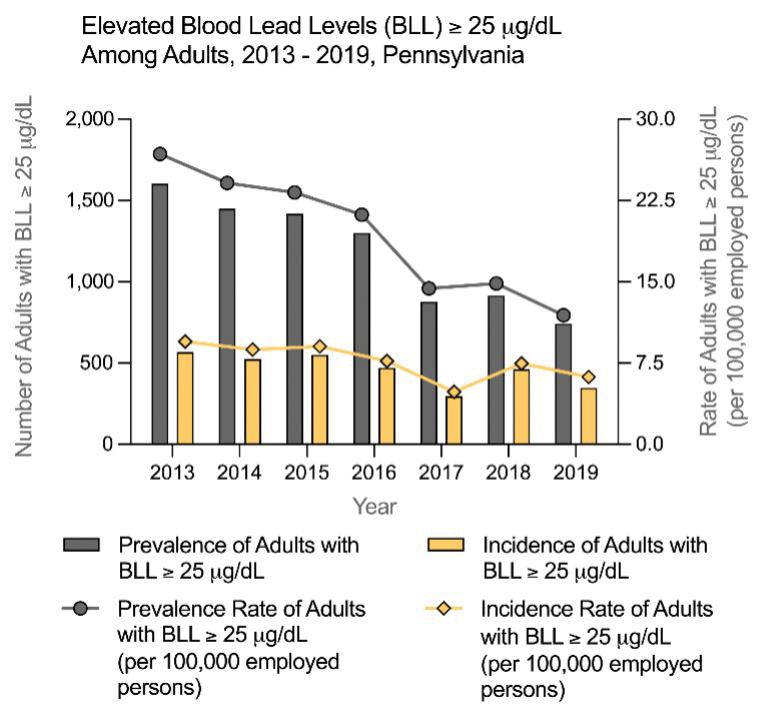
Lead cannot break down and serves no biological function in the body. Therefore, no amount of lead in blood is safe. Over time, lead can accumulate in bones, circulate in the blood, and cause damage to major organs and organ systems. Specifically, lead can harm the brain and result in symptoms such as loss of concentration, headache, irritability, difficulty remembering, and dizziness. In extreme cases, brain swelling may occur. Low level lead exposure in adults has recently been linked to an increased risk of cardiovascular disease. Lead induces reproductive toxicity in both males and females and may cause infertility. Other symptoms of lead exposure include fatigue, anemia, nausea and vomiting, anorexia, and joint and muscle pain. Lead has also been associated with hearing loss and kidney disease. Smoking increases oxidative stress which may worsen the symptoms associated with lead exposure. Due to lead contaminated tobacco, individuals who smoke, and their families, are at greater risk for lead exposure.
Adult Pennsylvanians working with leaded materials may be occupationally exposed to lead. The primary route of exposure at work is through inhaling lead fumes or dust. Additionally, individuals may unknowingly ingest lead-contaminated food or water. Not washing hands after handling leaded products will increase the likelihood of ingestion. The Occupational Safety and Health Administration (OSHA) has regulations to help protect workers from occupational lead exposure. If lead exposure is a known risk at the workplace, the employer is required to provide a safe working environment, which includes but is not limited to providing safety training, installing ventilation systems, and supplying personal protective equipment.
Occupational exposure increases the risk of take-home lead. Take-home lead exposure occurs when people exposed to lead at work or in other activities unintentionally bring lead into their homes. This is often in the form of lead dust that can be carried home on clothes, shoes, skin, or hair, exposing other family members including children. Children, as well as women who are pregnant or are planning to become pregnant, are at greater risk for the adverse effects from lead exposure.
21 Winter 2023 : Philadelphia Medicine FEATURE philamedsoc.org
continued on next page
continued from page 21
Washing hands, changing out of work clothes and shoes before entering the home, and routinely cleaning the car that is used for work travel can help protect families from take-home lead exposure.
Other non-occupational sources of lead exposure can contribute to an individual’s lead burden or increase the likelihood of take-home lead. Some common activities that increase the risk of lead exposure include home restoration projects (especially sanding walls with leaded paint), fishing and hunting, metalwork, art restoration and stained-glass work, cooking with imported ceramicware or spices, wearing imported cosmetics or using imported medicines, and drinking home-distilled liquids such as moonshine. Due to the traditional use of lead in pipes, older homes built before 1986 may contain leaded pipes that increase the risk of ingestion of lead contaminated drinking water. Homes built before 1978 may contain lead paint which contributes to lead dust in the home once it begins to peel and crack. In rare cases, retaining a bullet or bullet fragments after a gunshot wound can result in continuous exposure to lead in adults.
Given the number of symptoms associated with lead exposure, along with the many potential sources, it is important for healthcare practitioners to ask questions about employers, workplace activities, and hobbies when collecting patient information and taking a patient history. If reasonable suspicion exists for lead exposure, a BLL test should be conducted. Test results of BLLs ≥5 µg/dL among individuals ≥16 years of age are reportable to the PA Department of Health (DOH) by law (28 Pa. Code § 27.34). The newly funded Pennsylvania Occupational Safety and Health Surveillance (PennOSHS) program within the PA DOH monitors workplace injury and illness in PA, including elevated BLL reports. It is critical to include employer and demographic information with test results, as this greatly enhances PA DOH lead surveillance. Many test results are submitted with “Unknown” employers which hinders the ability of PennOSHS to collaborate with industries and occupations that require updated lead exposure safety information. In efforts to increase surveillance, PennOSHS is currently conducting interviews of Pennsylvanians with elevated BLLs and no additional workplace information. One effective way to collect relevant patient information would be to revise patient intake forms to include questions on employers and hobbies.
It is important for healthcare practitioners to follow up with patients after a BLL test has been conducted and to determine the best course of action to reduce elevated BLLs. The most effective way to reduce lead toxicity is to eliminate the source of lead exposure. However, that may not be feasible especially if an individual is exposed at work and depends on that work for their livelihood. Discussing best practices to reduce lead exposure in both occupational and non-occupational settings with patients will help mitigate personal and take-home lead exposures. These may include:
• Wash hands often, especially before eating, drinking, smoking, or leaving the workplace
• Only eat or drink in a designated clean space when at work
• Use the appropriate personal protective equipment (PPE) when working with lead, such as gloves and respirators. Ensure that respirators, and other PPE, fit properly
• Clean the car that is used to travel to and from work, as lead dust may accumulate there
• Remove lead contaminated clothes and shoes at work and change into clean clothes before returning home
In extreme cases, chelation therapy has been used to lower an individual’s BLL. Chelation therapy involves the administration of a medication, such as a chelating agent, that will bind to metals in the blood so that they may be excreted through urine. Although chelation therapy has been shown to help remove lead from the body, it does not reverse damage to organs that may have occurred. Due to the cellular toxicity of lead, treatment with antioxidants has also been shown to help in reducing harmful effects. It is also important to make sure patients are aware of take-home lead and how that may be impacting their families. If children are living in the home, and there is a chance of take-home lead exposure, then a blood lead test for the child should be recommended. BLLs should be monitored in both adults and children until the BLL has declined to less than 5 µg/dL or 3.5 µg/dL respectively. Follow up testing is dependent upon severity of exposure and age. The higher the initial BLL and younger the individual, the more quickly follow up and subsequent testing should be conducted to ensure that the source of lead exposure has been removed. Individuals exposed to lead should contact their primary care physician for blood lead testing and to seek medical treatment.
The PA DOH and PennOSHS program welcomes healthcare practitioners in its efforts to reduce adult lead exposure in Pennsylvania. Some resources that the PennOSHS program can offer include help in developing educational material or providing guidance on ways to collect and interpret patient information for lead exposure risk. If you are interested in learning more information, or building a partnership, please reach out to PennOSHS (email: dehe@pa.gov). PennOSHS will continue to take action to reduce lead exposure that impacts so many Pennsylvanians. •
Remy Babich – Remy Babich, PhD is the Pennsylvania Occupational Safety and Health Surveillance (PennOSHS) program manager in the Division of Environmental Health Epidemiology. She works to increase occupational health among the PA workforce and reduce workplace injury and illness. She prioritizes mitigating workplace lead exposure and increasing lead exposure awareness among Pennsylvanians.
Katie Sneeringer - Katie Sneeringer, DrPH is the Epidemiologist Supervisor for the Division of Environmental Health Epidemiology at the Pennsylvania Department of Health. She works to support various programs throughout the division including the Environmental Public Health Tracking and Environmental Health Capacity Grants.
Stephanie Hasanali - Stephanie Hasanali, PhD has worked as a contractor in the Division of Environmental Health Epidemiology since 2017. She oversees the Environmental Health Capacity program and contributes to several other CDCfunded programs.
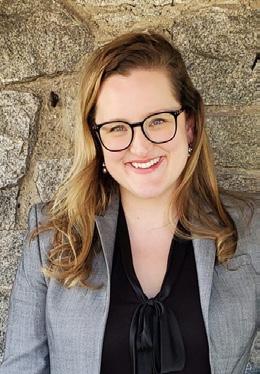

Note: Data were collected from the PA National Electronic Disease Surveillance System (PA-NEDSS) program and the Bureau of Labor Statistics (BLS) Geographic Profile of Employment and Unemployment. For more information on PennOSHS and adult blood lead surveillance please see the PennOSHS 2021-2022 Annual Report.
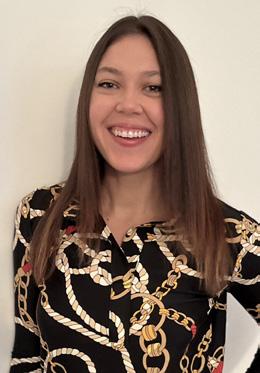
22 Philadelphia Medicine Winter 2023 FEATURE continued philamedsoc.org
Adult Pennsylvanians Working with Leaded Materials may be Occupationally Exposed to Lead

WELCOME TO BETTER
BUSINESS BANKING

Built for Your Practice
We understand that starting, running, and expanding a practice is no small feat. Our team of Relationship Managers offers years of experience partnering with medical professionals to develop custom strategies that address their distinct healthcare business needs.

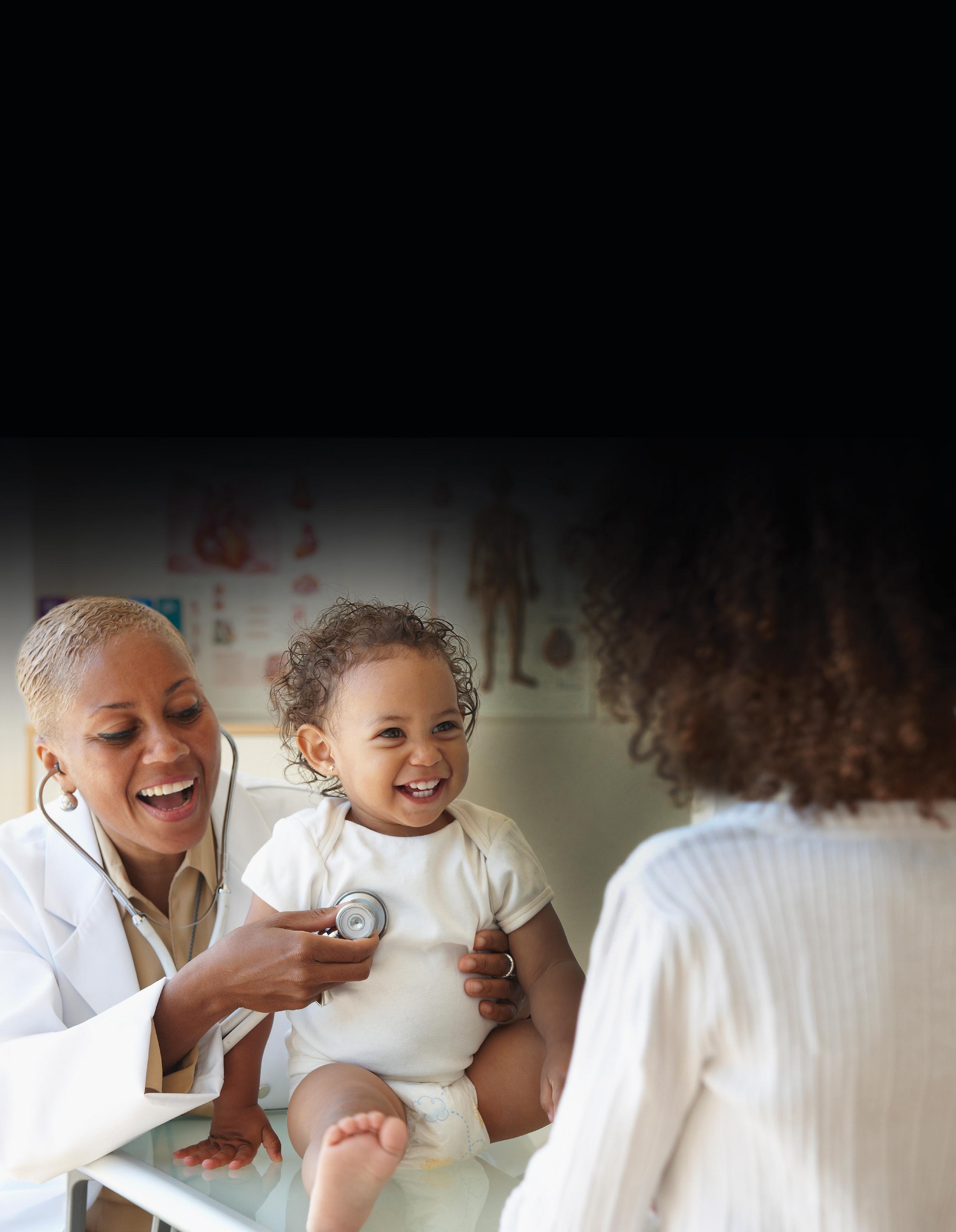
CitadelBanking.com/ Medical
Citadel is recognized as a Forbes 2022 Best-in-State Credit Union. Federally Insured by NCUA






 Mark C. Austerberry
Editor
Mark C. Austerberry
Editor


 by William F. King, Jr., MD, FAAP Vice President, Medical Society of Eastern PA Board Member At Large, Philadelphia County Medical Society
by William F. King, Jr., MD, FAAP Vice President, Medical Society of Eastern PA Board Member At Large, Philadelphia County Medical Society





























 by Kent Bottles, MD
by Kent Bottles, MD



 by Mark C. Austerberry, PCMS Executive Director
by Mark C. Austerberry, PCMS Executive Director




















